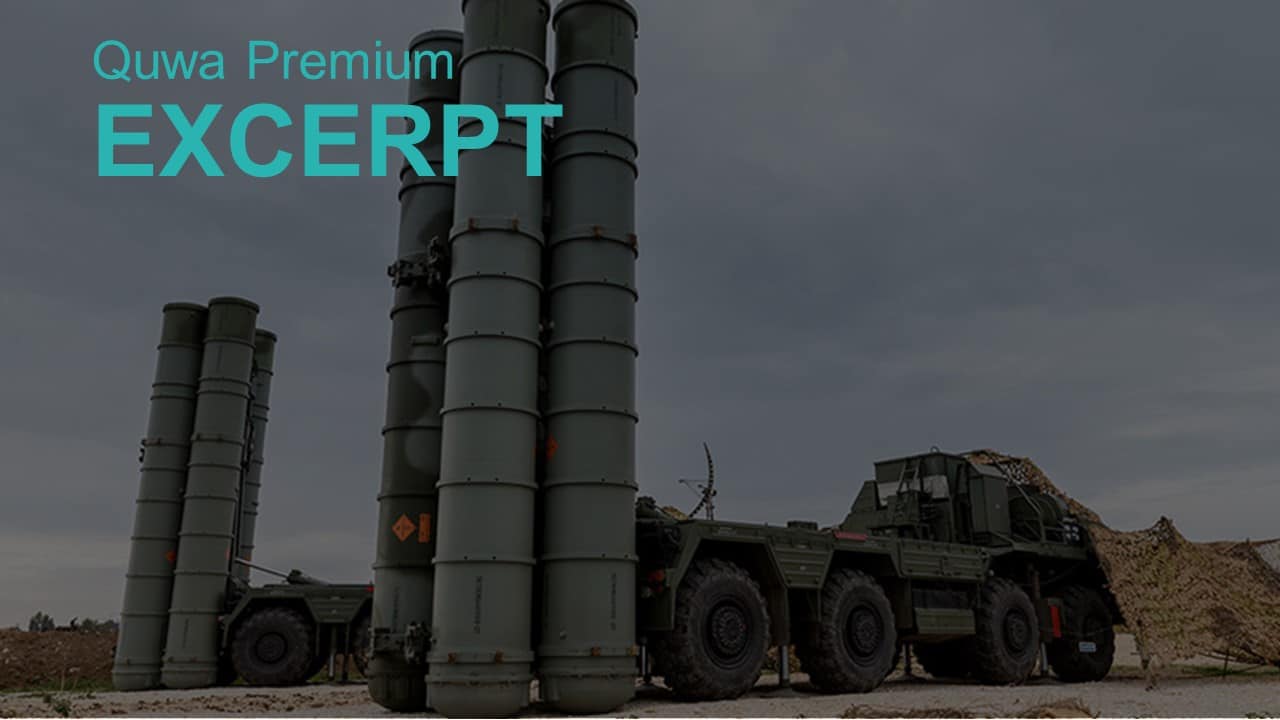1989Views

India’s Air Defence Efforts are Eroding Pakistan’s Offensive Ability
Through its deployment of land-attack cruise missiles (LACM) and various ballistic missiles, Pakistan stated that it is maintaining “minimum credible deterrence.” However, while that might be accurate in terms of its nuclear deployment capability, Pakistan’s conventional deterrence is at risk of eroding.
By ‘conventional deterrence,’ we refer to Pakistan’s ability to leverage its conventional capabilities – such as airstrikes, deploy armoured columns, or launch conventional warheads at long-range – to dissuade its adversary India from instigating a potential conflict through a pre-emptive strike.
The main causes for this erosion of capability stem from multiple factors, but the most pressing problem, at least in the near-term, is India’s significant investment in ground-based air defence systems. This would include the flagship, the S-400, and an assortment of other potent solutions, such as the Barak 8.
The Impact of India’s Air Defence Efforts
In response to its airstrike on Balakot, the Pakistan Air Force (PAF) undertook a retaliatory air campaign – designated “Swift Retort” – centered on its core assets, namely the F-16, JF-17, Mirage III/5, Falcon DA-20 electronic warfare (EW) jammer, and Erieye airborne early warning and control (AEW&C) system.
Whatever the intent of Swift Retort, it was without a doubt a template of an offensive counter-air (OCA) package. Moreover, with some element of surprise to India (such as the disproportionate size of the OCA force), the PAF had demonstrated a credible offensive capability should India trigger a conflict.
For More on Swift Retort and the February 2019 Kashmir Air Skirmish:
- The Aftermath of the India-Pakistan Air Battle | Read Now
- The Growing Importance of Stand-Off Weapons & Long-Range Air-to-Air Missiles |Read Now
However, the PAF’s ability to exercise that capability is eroding in the face of India’s growing investment in ground-based air defence systems (adding to its significant spending on new multi-role fighters).
The most significant of these new air defence assets is the S-400. In 2018, India signed the $5.5 billion USD contract with Russia for the long-range surface-to-air missile (SAM) system. While the S-400 is best known for the 40N6 missile, which offers a range of up to 400 km, it is in fact a multi-layered solution comprising of various SAMs, including the 250 km 48NG, 120 km 9M96E2 and 40 km 9M96E.
Though Washington is opposing the sale, it appears that India is on-track to start receiving the S-400 after 2020, according to the Russian Federal Service for Military-Technical-Cooperation.[1]
In addition to linking the S-400 into an integrated air defence ground environment (ADGE), which will see it draw on gap filler radars (to plugin blind spots of the S-400’s long-range, high-altitude radar), India will also deploy the Barak 8-based MRSAM platform at-scale through the 2020s. The baseline Barak 8 offers a range of up to 70 km.[2] Israel Aerospace Industries (IAI) is also developing a long-range variant of the Barak-8, i.e., the Barak 8ER, which could potentially have a range of up to 150 km[3]…
End of Excerpt (483/1,790 words)
You can read the complete article by logging in (click here) or subscribing to Quwa Premium (click here).
[1] “Deliveries of S-400 missile systems to India will start after 2020 — government service.” Russian News Agency TASS. 26 June 2019. URL: https://tass.com/defense/1065785
[2] Rahul Bedi. “India commissions second Kolkata-class destroyer.” Jane’s Defence Weekly. 29 September 2015. URL: https://web.archive.org/web/20160123044942/http://www.janes.com/article/54950/india-commissions-second-kolkata-class-destroyer
[3] Robin Hughes. “IAI en route to extended range Barak-8ER.” Jane’s Defence Weekly. 10 August 2015. URL: https://web.archive.org/web/20160808031154/https://www.janes.com/article/53532/iai-en-route-to-extended-range-barak-8er


